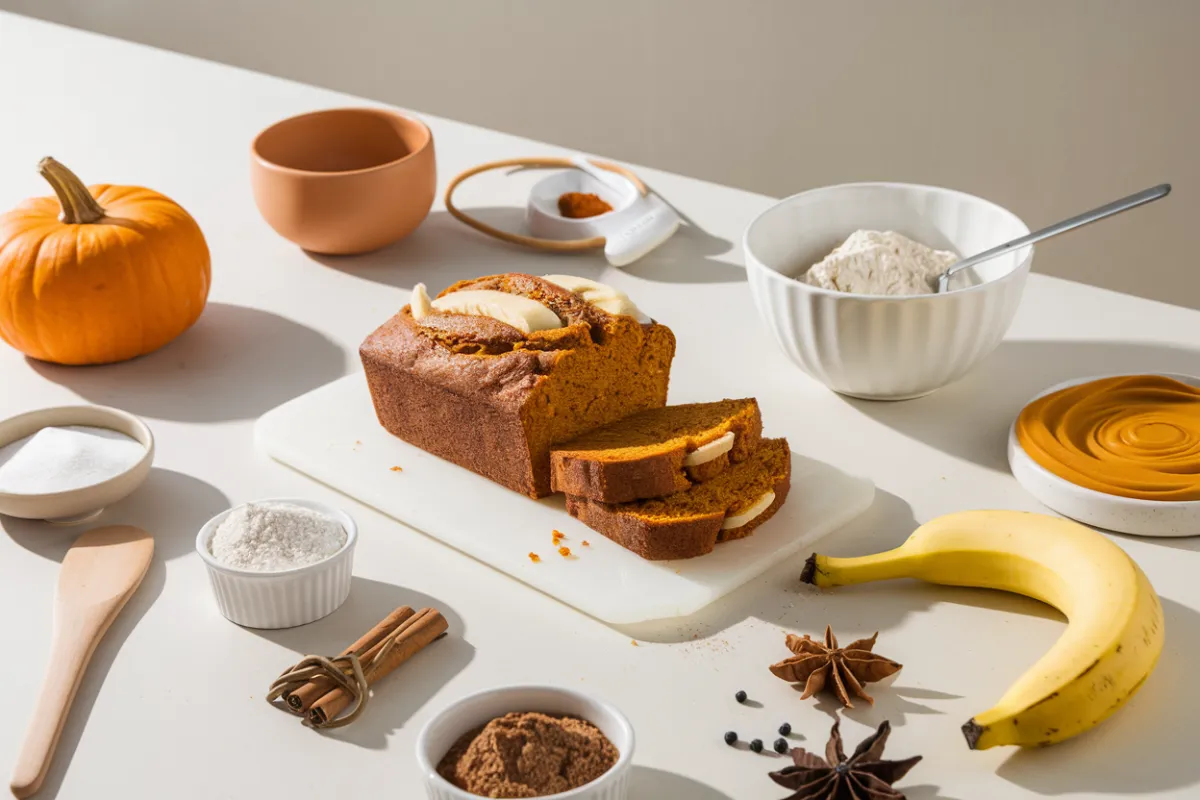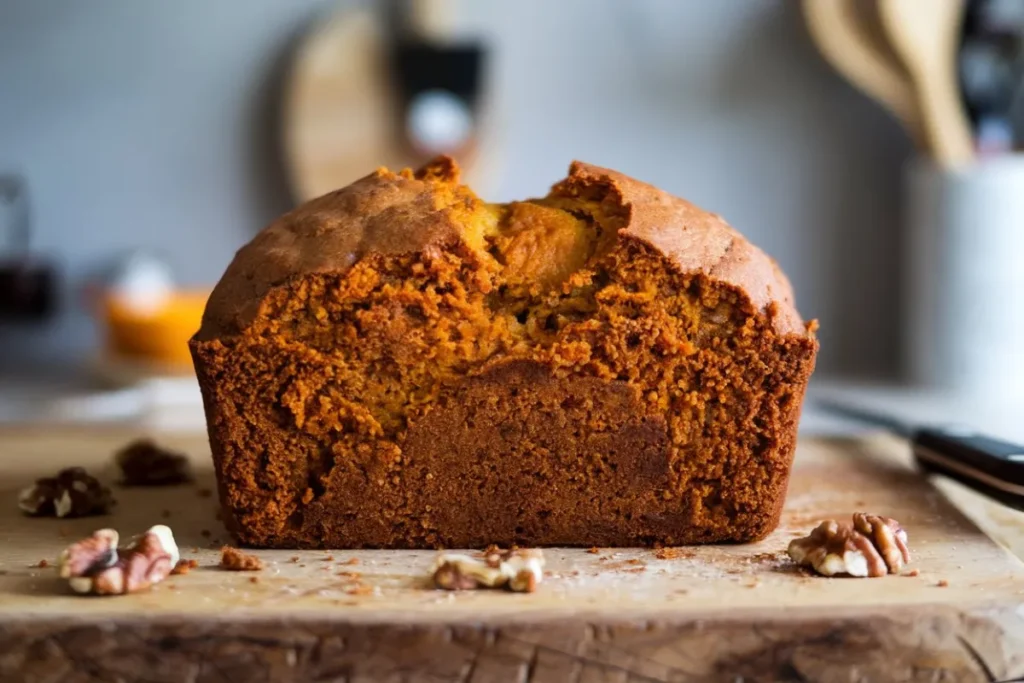Pumpkin bread is a quintessential autumn treat, but it can sometimes turn out bland despite following trusted recipes. This common issue usually stems from a few key factors. First, pumpkin itself is naturally mild, so the bulk of the flavor comes from spices like cinnamon, nutmeg, and cloves. If your bread lacks bold flavors, you may not be using enough spice or fresh spices. Old spices lose potency over time, and under-spicing is a common culprit behind bland pumpkin bread.
Additionally, the pumpkin puree you use can affect the taste. Store-bought puree may contain excess water, diluting the flavor. To fix this, you can cook down the puree before adding it to the batter, which concentrates its natural sugars and intensifies the pumpkin flavor. Another factor is the balance of wet-to-dry ingredients—too much moisture from oil or eggs can dilute the spices and sweetness, so adjusting this ratio is key.
Finally, try blooming your spices by gently heating them in butter or oil before adding them to the batter, which enhances their aroma and flavor. These small tweaks can make a big difference, turning your bland pumpkin bread into a flavorful, satisfying loaf.
1. The Type and Quality of Pumpkin Puree
One of the main reasons for bland pumpkin bread is the type of pumpkin puree you’re using. Pumpkin puree is often the foundation of the flavor, but not all purees are created equal. Many people think the pumpkin itself carries a lot of flavor, but in reality, pumpkin has a mild, earthy taste that doesn’t stand out unless it’s properly concentrated or paired with complementary ingredients.
Canned pumpkin is often more reliable than homemade puree because it has a more consistent texture and flavor. However, even canned pumpkin can vary in quality depending on the brand. If you’re making your own puree from scratch, homemade versions can have a higher water content, which dilutes the overall taste of the breadKing Arthur Baking
To boost the pumpkin flavor, one great technique is cooking down the puree before adding it to the batter. Slowly heating the puree on the stove allows water to evaporate, concentrating the natural sugars and intensifying the pumpkin flavor. By reducing the moisture in the puree, you’ll get a richer flavor without compromising the texture of the bread. This technique is recommended by experts, and you can read more about it on King Arthur Baking’s website.

2. Not Enough Spices
When we think of pumpkin-flavored baked goods, we usually imagine the warm, inviting spices—like cinnamon, nutmeg, ginger, and cloves—that characterize fall. However, one common mistake that results in flavorless pumpkin bread is not using enough spices. Because pumpkin itself is relatively mild, the spices are crucial for creating the flavor we associate with classic pumpkin breadKing Arthur Baking
Many recipes call for a small amount of spice, often not enough to make the bread truly stand out. If you feel your pumpkin bread tastes bland, try increasing the quantity of your spices. Instead of one teaspoon of cinnamon, use two; and don’t be afraid to add other spices like cardamom or allspice for more complexity.
Another helpful trick is to bloom your spices. Blooming involves lightly heating the spices in oil or butter before incorporating them into the batter. This releases their aromatic oils and makes the spices more potent, resulting in a bolder, richer flavor. Blooming spices is a technique often used by professional bakers, and it can make a significant difference in your final product.
3. Wet-to-Dry Ingredient Ratios
A common reason pumpkin bread may lack flavor is due to the imbalance between wet and dry ingredients. If the bread has too much moisture (from excess pumpkin puree, oil, or eggs), the flavors can become diluted, resulting in a loaf that tastes bland and unbalanced.
To avoid this, make sure to follow the recipe’s proportions closely. Too much oil or puree can overwhelm the spices and other flavor elements. If you’re looking for a richer, more flavorful loaf, you can reduce the oil slightly and add a spoonful of Greek yogurt or sour cream, which will add moisture without watering down the flavor. This adjustment can also help balance the sweetness, leading to a more satisfying taste.
4. Using Add-ins for Texture and Flavor
If your pumpkin bread still lacks flavor, adding mix-ins can make a significant difference. Nuts like walnuts or pecans provide a crunchy texture and a slight bitterness that complements the sweetness of the bread. Similarly, dark chocolate chips or dried fruits like cranberries can introduce bursts of flavor that enhance the overall profile of the loaf King Arthur Baking
Another option is to create a streusel topping using brown sugar, cinnamon, and butter. The streusel adds a sweet, crunchy layer to the bread, which can contrast nicely with the softer texture inside.
5. The Power of Sweeteners
Sweeteners play an essential role in balancing the flavors of pumpkin bread. If your bread is too bland, it might be because you’re not using the right type of sweetener. White sugar provides sweetness but can sometimes taste flat. Instead, consider using brown sugar or even maple syrup, which add both sweetness and depth of flavor.
Honey and molasses are other great options that can give your bread a richer taste without overpowering the spices. Just be careful not to use too much, as it can change the texture of the bread.
6. Correct Mixing Techniques
While it may seem unrelated to flavor, mixing techniques can impact the taste and texture of your bread. Overmixing the batter develops too much gluten, which results in a denser, tougher loaf. Dense bread often doesn’t distribute flavor evenly, leading to bites that taste dull or unbalancedKing Arthur Baking
To avoid this, mix your wet and dry ingredients separately and combine them just until everything is incorporated. Resist the temptation to overmix, as the batter should remain slightly lumpy for the best texture.
7. Baking at the Right Temperature
The temperature at which you bake pumpkin bread plays a crucial role in how the flavors develop. Baking at too high a temperature can cause the bread to brown too quickly on the outside, leaving the inside undercooked and flavorless. Conversely, baking at too low a temperature can dry out the bread, diminishing the flavor and resulting in a dull loaf King Arthur Baking
The ideal baking temperature for pumpkin bread is 350°F, which allows the loaf to cook evenly, ensuring that the flavors develop properly without burning the exterior. Make sure to preheat your oven and, if possible, use an oven thermometer to ensure accuracy.
Frequently Asked Questions
Why does my pumpkin bread taste bland even with spices?
Even with the right spices, your pumpkin bread might taste bland if the spices aren’t fresh. Spices lose their potency over time, especially when stored for long periods. To fix this, always use fresh spices or buy small quantities to ensure they stay aromatic. Another tip is to bloom the spices by heating them in butter or oil to release their flavors.
How can I make my pumpkin bread taste more like pumpkin?
To intensify the pumpkin flavor, try cooking down the puree before adding it to the batter. This technique evaporates excess water and concentrates the natural sugars in the pumpkin, giving your bread a stronger, richer pumpkin flavor. You can also increase the amount of pumpkin puree in the recipe, but be careful not to make the batter too wet.
What’s the best way to add moisture without diluting flavor?
Using ingredients like Greek yogurt or sour cream adds moisture to your pumpkin bread without watering down the flavor. These ingredients provide richness and a creamy texture, helping to balance the flavors and give your bread a tender crumb.
How do I avoid overmixing the batter?
To avoid overmixing, combine the wet and dry ingredients separately, then gently fold them together until just combined. This prevents gluten from overdeveloping and ensures the bread remains light and fluffy with even flavor distribution.
Conclusion
If your pumpkin bread lacks flavor, a few strategic changes can transform it from bland to delicious. By cooking down the pumpkin puree, you concentrate the natural sugars, intensifying the pumpkin’s flavor while eliminating excess moisture. This step ensures that your bread has a deeper, richer taste without being soggy. Similarly, blooming your spices—a process of heating spices like cinnamon, nutmeg, and ginger in butter or oil—releases their essential oils, making them more aromatic and flavorful.
Another critical element is adjusting the balance of wet-to-dry ingredients. Too much moisture can dilute the flavors, while the right mix will give your bread a tender, moist texture that carries the spices and sweetness beautifully. Don’t overlook the impact of using fresh spices and higher-quality sweeteners like brown sugar or maple syrup, which add complexity and depth to the flavor.
Also, experimenting with add-ins like nuts, chocolate chips, or dried fruits can enhance both the texture and taste of your pumpkin bread. These small additions bring variety and balance, elevating a simple loaf into something truly memorable. Lastly, make sure you’re baking your bread at the correct temperature—around 350°F—to allow the flavors to develop fully without drying out the loaf.
With these adjustments, you’ll no longer have to ask why your pumpkin bread has no flavor. Instead, you’ll be baking a flavorful, aromatic loaf that everyone will love. Learn more for more tips on perfecting your recipes.
